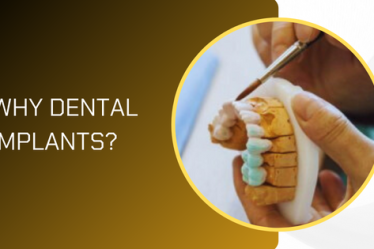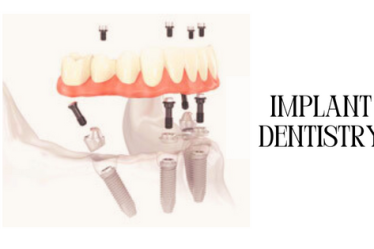
The field of dentistry has evolved significantly over the years, and patients now have a wide range of options to choose from when it comes to replacing missing teeth. Two of the most popular choices include dental implants and traditional dentures.
Dental implants and traditional dentures have long been considered the primary solutions for individuals with missing teeth. Both treatments are designed to restore the patient’s ability to chew, speak, and smile confidently. However, as dental technology progresses, it is becoming increasingly clear that dental implants offer a number of significant advantages over traditional dentures. This article will discuss the key differences between implant dentistry and traditional dentures and explain why dental implants are the preferred choice for most patients.
Comfort
Traditional Dentures:
Traditional dentures comprise a removable dental appliance that replaces missing teeth and surrounding gum tissue. These dentures consist of a custom-made acrylic base that fits over the natural ridges of the gum, with prosthetic teeth attached.
While traditional dentures have long been a viable solution for tooth replacement, they may cause discomfort for some individuals. Denture-wearers often report issues with sore spots, which can arise from ill-fitting appliances, and may need frequent adjustments to ensure a proper fit. Additionally, the constant pressure on gum tissue and underlying bone may cause the oral structures to change over time, which in turn, can cause dentures to become loose or uncomfortable.
Implant Dentistry:
Compared to traditional dentures, dental implants provide superior comfort. Dental implants involve the placement of a titanium post into the jawbone, which fuses to the bone over time through a process known as osseointegration. This post serves as an artificial tooth root, supporting a dental crown or bridge for a much more natural feeling replacement.
As dental implants are secured directly to the jawbone, patients typically experience minimal discomfort. Furthermore, the pressure from chewing and biting is distributed evenly across the patient’s oral structures, minimizing the occurrence of sore spots.
Stability and Functionality
Traditional Dentures:
Dentures can often present challenges when it comes to stability and functionality. Because dentures rest on the gum tissue and are not anchored into the jawbone, they are prone to movement during everyday activities such as chewing, speaking, or laughing. This insecurity can lead to embarrassment for the patient and may require them to make adjustments and use adhesives to help secure the appliance.
Additionally, traditional dentures are not able to fully replicate the biting and chewing forces of natural teeth. This inadequacy may force patients to restrict their diet, avoiding certain foods that require strong biting force or strain the denture.
Implant Dentistry:
In contrast, dental implants provide exceptional stability. Once the titanium post has effectively integrated with the jawbone, it effectively acts as an artificial tooth root. This process grants patients the confidence to eat, speak, and smile without the worry of their prosthesis shifting or dislodging. Additionally, dental implants are strong and durable, allowing patients to enjoy a wider variety of foods and maintain a healthy diet.

Bone Preservation
Traditional Dentures:
Traditional dentures, unfortunately, do not address the issue of bone loss due to tooth loss. When teeth are lost, the surrounding bone loses stimulation and support, leading to progressive bone resorption, which can significantly alter the facial structure over time. This process can result in a sunken appearance and may contribute to additional tooth loss. Moreover, as bone loss continues, fitting and adjusting dentures becomes increasingly difficult.
Implant Dentistry:
Dental implants actively promote bone preservation. By providing a tooth root substitute, dental implants help maintain bone density by stimulating the bone through eating and chewing. This preservation not only aids in maintaining facial structure but can also prevent future tooth loss.
Long-term Value
Traditional Dentures:
While traditional dentures may initially be more cost-effective, they require frequent follow-up appointments for adjustments and relines. Additionally, dentures typically need to be replaced every 5-10 years, adding to the overall cost.
Implant Dentistry:
Dental implants, though they may have a higher upfront cost, last much longer than dentures – often for a lifetime. Implants require less maintenance and offer more predictable outcomes, making them a worthwhile long-term investment in both oral health and overall quality of life.
Conclusion
In this comparison, it becomes evident that dental implants surpass traditional dentures in terms of comfort, stability, bone preservation, and long-term value. While dentures may still be a suitable option for some patients, dental implants offer a more permanent, functional, and comfortable solution that can significantly improve the patient’s quality of life. For those considering replacing missing teeth, it is highly recommended to discuss the benefits of implant dentistry over traditional dentures with their dental healthcare professional.


